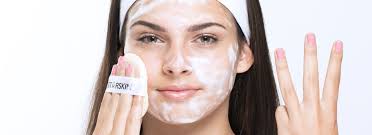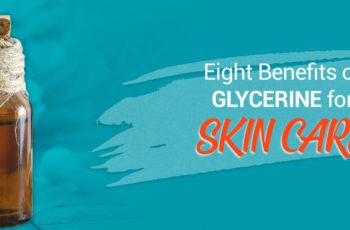
**Exfoliation vs Desquamation of Skin: Understanding the Key Differences and Importance for Skin Health**
The processes of exfoliation and desquamation are vital for maintaining smooth, glowing, and healthy skin. These two terms are often used interchangeably, but they refer to different mechanisms by which the skin sheds its old, dead cells. Understanding the differences between exfoliation and desquamation, as well as the importance of these processes for overall skin health, can help individuals make more informed decisions about their skincare routine.
**What Is Desquamation?**
Desquamation is the natural process by which the skin sheds its dead cells from the outermost layer, known as the stratum corneum. It is a key aspect of skin regeneration, ensuring that the skin remains fresh, smooth, and youthful in appearance. This process occurs continuously, with new skin cells being produced in the deeper layers of the epidermis and gradually migrating towards the surface, where they mature and eventually shed.
The desquamation process begins when keratinocytes—specialized skin cells in the basal layer of the epidermis—start to mature as they move upward through the layers of the skin. As these cells reach the surface, they become filled with keratin, a tough protein that helps protect the skin from environmental damage. Once the keratinocytes reach the outer layer, they eventually die, and the connections between these dead cells are broken down by enzymes. This allows the cells to separate and flake off, making way for newer, healthier cells beneath.
Desquamation is essential for maintaining the skin’s natural barrier and for promoting a radiant, smooth complexion. When this process is disrupted, it can lead to the buildup of dead skin cells, which can cause the skin to appear dull, rough, or uneven. Proper desquamation is vital for maintaining youthful and glowing skin, preventing the development of certain skin conditions like acne, rough texture, and ashy skin.
**What Is Exfoliation?**
Exfoliation, on the other hand, is an external process designed to enhance or speed up the natural desquamation process. While desquamation occurs naturally, exfoliation involves the use of products or techniques that physically or chemically assist in removing dead skin cells from the surface of the skin. Exfoliation can be achieved through the use of mechanical exfoliants, such as scrubs and brushes, or chemical exfoliants, such as acids (e.g., alpha hydroxy acids or beta hydroxy acids).
Exfoliation works by loosening the bonds between the dead skin cells on the surface, making it easier for them to be removed. By accelerating the shedding of dead cells, exfoliation can reveal fresher, brighter skin underneath. This process not only improves the skin’s appearance but also encourages the turnover of new skin cells, contributing to a more even texture and tone.
Exfoliating regularly can provide a smoother, more youthful complexion by removing the buildup of dead cells that can clog pores and contribute to skin issues like acne or blackheads. However, over-exfoliating can lead to skin irritation, dehydration, and inflammation, which is why it is essential to use exfoliating products that are suited to your skin type and needs.
**Key Differences Between Desquamation and Exfoliation**
While both desquamation and exfoliation result in the removal of dead skin cells, the primary difference between them lies in how this process occurs:
– **Desquamation** is a natural, biological process that happens without any external intervention. It is the body’s way of shedding old skin cells, and it is essential for the skin’s regeneration.
– **Exfoliation** is an external process that speeds up or enhances the natural desquamation process. It involves using products or techniques to help remove dead skin cells more quickly.
In short, desquamation is the body’s natural mechanism for skin renewal, while exfoliation is a method of assisting or accelerating that process to maintain healthy, smooth skin.
**Keratinization and Its Role in Desquamation and Exfoliation**
Both desquamation and exfoliation are linked to the process of keratinization, which is the formation and maturation of keratin, the protein that makes up the skin, hair, and nails. Keratinization begins in the basal layer of the epidermis, where skin cells are produced. As these cells move upward through the layers of the skin, they undergo various changes, including the accumulation of keratin, which strengthens the cells and provides a protective barrier.
As the keratinocytes mature and reach the surface of the skin, they eventually die and become part of the stratum corneum, the outermost layer of the epidermis. This is where desquamation occurs, as the dead cells are shed to make way for new, fresh cells. Exfoliation can help to speed up this process, allowing for more rapid turnover of skin cells and promoting smoother, brighter skin.
**Skin Layers Involved in Desquamation and Exfoliation**
Desquamation and exfoliation primarily occur in the outermost layer of the skin, known as the stratum corneum. This layer is composed of dead skin cells that have been filled with keratin. When the desquamation process is functioning properly, these dead cells naturally separate from the surface of the skin and are replaced by fresh, healthy skin cells from the deeper layers of the epidermis.
Exfoliation, when applied externally, targets this layer as well. Exfoliating products work by loosening the bonds between the dead skin cells, making it easier for them to be removed. This process can help to prevent the buildup of dead cells that can cause skin issues like clogged pores, rough texture, and an uneven complexion.
**The Importance of Desquamation for Healthy Skin**
Proper desquamation is critical for maintaining skin health. When desquamation is impaired, it can lead to a buildup of dead skin cells, which can clog pores and contribute to various skin problems. For example, when dead skin cells are not removed effectively, they can lead to the development of acne, blackheads, or rough, uneven skin texture.
In addition to its role in preventing skin problems, desquamation helps maintain a healthy skin barrier. The stratum corneum acts as the skin’s first line of defense against environmental factors, such as pathogens, pollutants, and UV radiation. By shedding old, damaged cells and replacing them with new ones, the skin is better able to protect itself from harm.
**Factors That Affect Desquamation and Exfoliation**
Several factors can influence the effectiveness of desquamation and exfoliation:
1. **Skin Type:** Different skin types may have varying rates of natural desquamation. For instance, dry skin may have a slower rate of cell turnover, leading to the buildup of dead cells on the surface.
2. **Age:** As we age, the skin’s natural desquamation process slows down, which can lead to a dull, lackluster complexion.
3. **Skin Care Products:** Using the right skincare products, such as exfoliators or moisturizers, can support the desquamation process and promote healthy skin renewal.
4. **Over-exfoliation:** While exfoliating can improve skin texture, over-exfoliating can strip the skin of essential moisture and cause irritation, leading to inflammation and compromised skin health.
**Conclusion: The Balance Between Exfoliation and Desquamation**
In summary, desquamation and exfoliation are two interrelated processes that play a crucial role in maintaining healthy, glowing skin. Desquamation is the natural shedding of dead skin cells, while exfoliation is an external intervention designed to enhance this process. By understanding the differences between these two mechanisms and using the appropriate skincare products, individuals can support their skin’s natural renewal cycle and achieve a smooth, radiant complexion. However, it is essential to strike a balance, as over-exfoliating or using the wrong products can disrupt the delicate skin barrier and lead to unwanted side effects.
To achieve optimal skin health, it is important to tailor your skincare routine to your specific skin type and needs, using products that promote proper desquamation without causing damage or irritation. When done correctly, exfoliation can help support the skin’s natural desquamation process, leading to healthier, more youthful skin over time.


